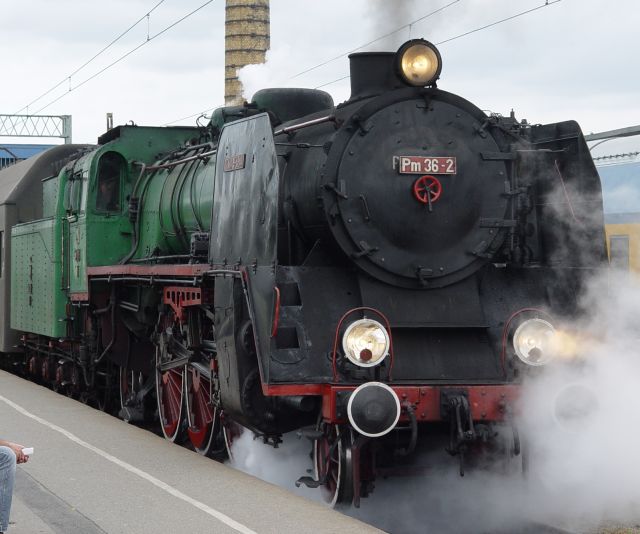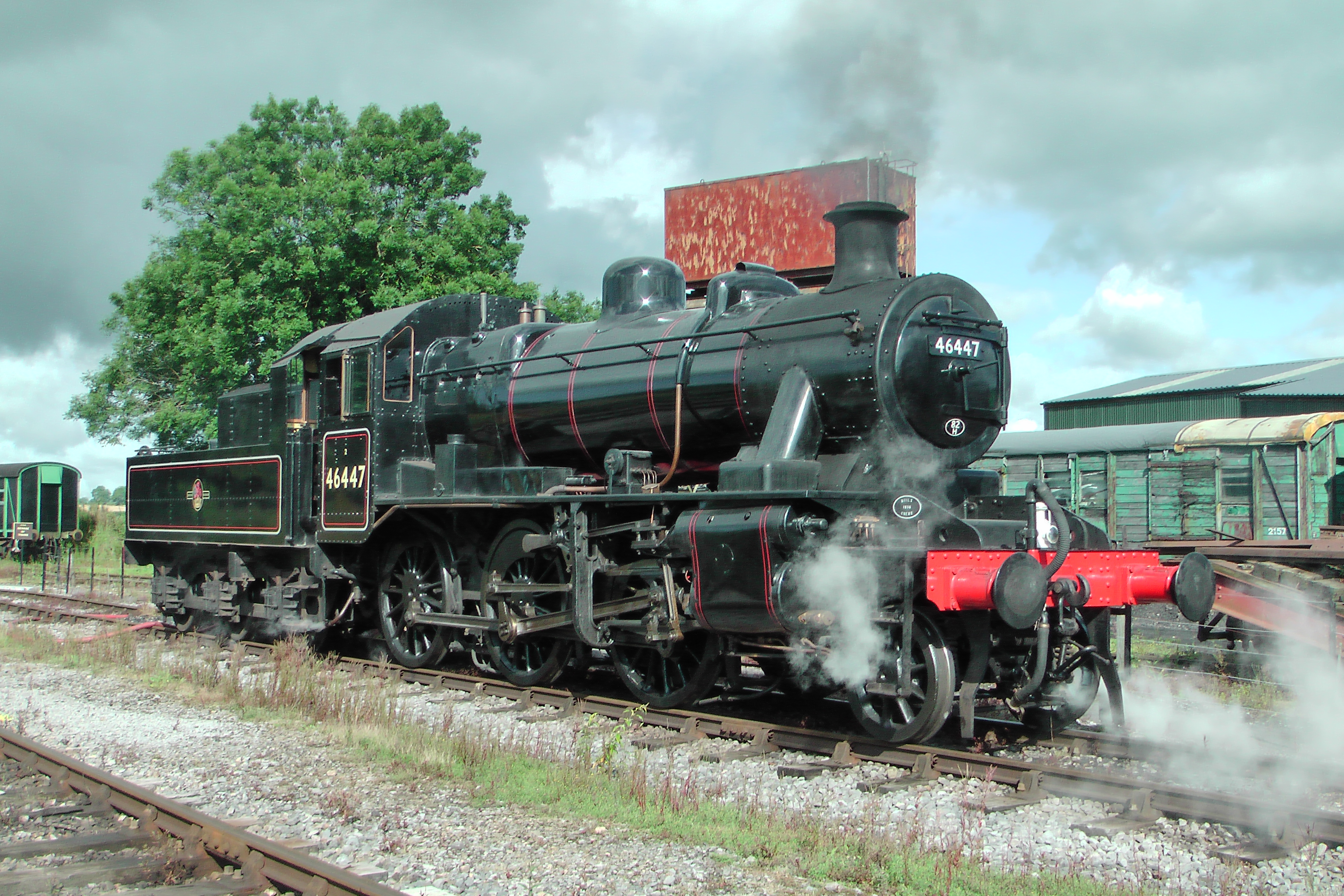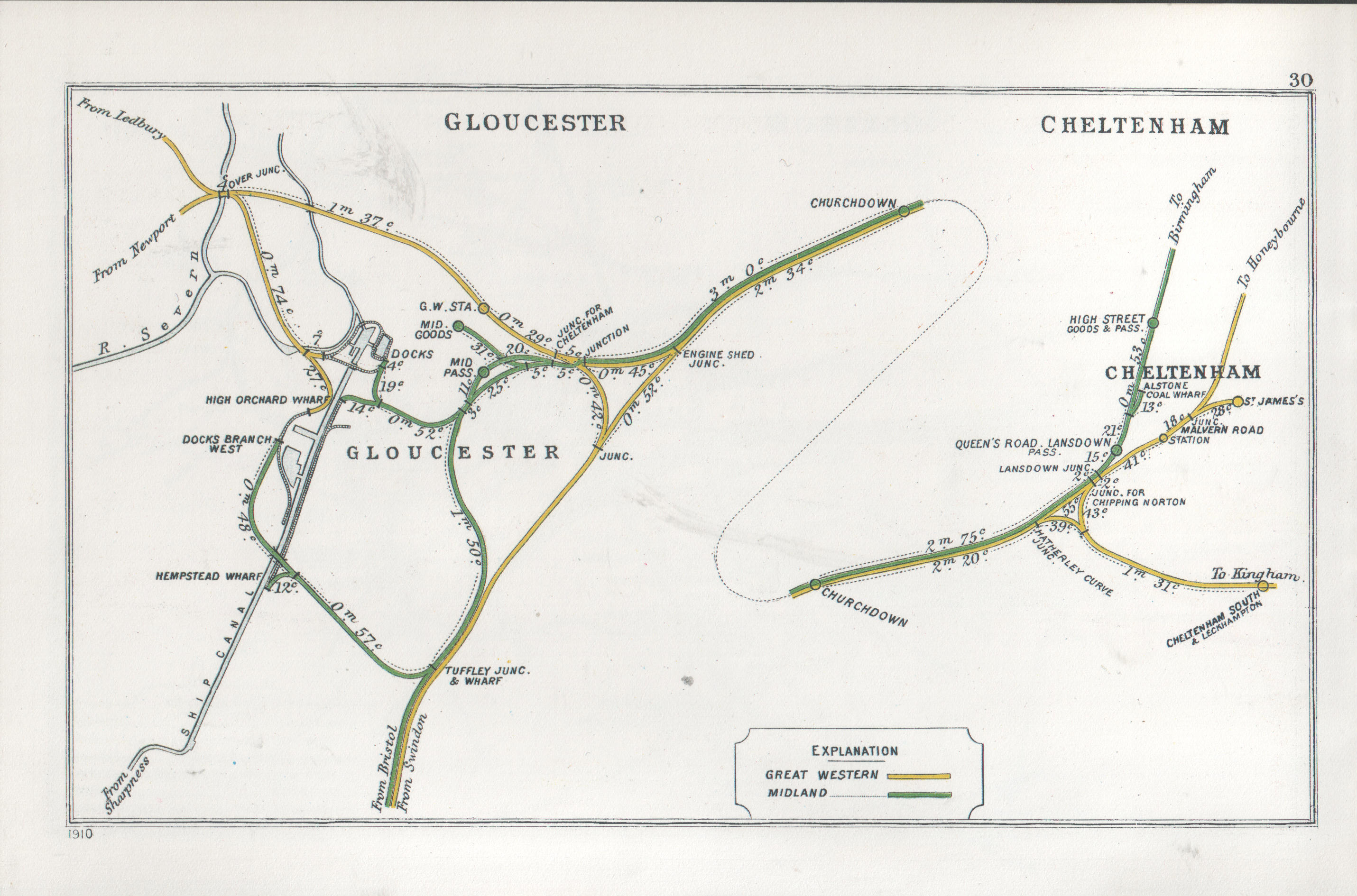|
Plym Valley Railway
The Plym Valley Railway is a heritage railway based on part of the now-closed South Devon and Tavistock Railway, a branch line of the Great Western Railway in Devon, England. The line originally opened in 1859 and closed in 1962. Heritage trains first ran in 2001. History The line was originally part of the South Devon and Tavistock Railway, a broad gauge railway linking Plymouth with Tavistock in Devon, England. This opened in 1859, was Track gauge conversion, converted to in 1892 and closed in 1962. Some local enthusiasts formed the Plym Valley Railway Association in 1980 to restore part of the line. Work started near Coypool in 1982 and they bought Bickleigh Siding in 1988 which became the site for a new Marsh Mills railway station. Trains could run the northwards to 'World's End' from October 2001 and another to the site of the Plymouth and Dartmoor Railway, Lee Moor Tramway crossing from May 2008. At this time the only station was at Marsh Mills but the line was ex ... [...More Info...] [...Related Items...] OR: [Wikipedia] [Google] [Baidu] |
Andrew Barclay Sons & Co
Andrew Barclay Sons & Co., currently operating as Brodie Engineering, is a railway engineering company, specialising in the heavy maintenance, refurbishment and overhauls for both passenger and freight rolling stock. Based around its works at Kilmarnock, it is the only active rail engineering business in Scotland. The company's history can be traced back to the establishment of an engineering workshop in Kilmarnock in 1840 by Andrew Barclay. It produced numerous steam locomotives during the nineteenth century and, during the following century, it produced several fireless locomotive, fireless and diesel locomotives as well. Ownership of the company has been exchanged several times, having become a private limited company in 1892. It was acquired by the Hunslet Engine Company, Hunslet Group during 1972, after which it was renamed Hunslet-Barclay. During the twenty-first century, the business has changed hands multiple times, having been purchased by LH Group in December 2003, the ... [...More Info...] [...Related Items...] OR: [Wikipedia] [Google] [Baidu] |
Devon
Devon ( ; historically also known as Devonshire , ) is a ceremonial county in South West England. It is bordered by the Bristol Channel to the north, Somerset and Dorset to the east, the English Channel to the south, and Cornwall to the west. The city of Plymouth is the largest settlement, and the city of Exeter is the county town. The county has an area of and a population of 1,194,166. The largest settlements after Plymouth (264,695) are the city of Exeter (130,709) and the Seaside resort, seaside resorts of Torquay and Paignton, which have a combined population of 115,410. They all are located along the south coast, which is the most populous part of the county; Barnstaple (31,275) and Tiverton, Devon, Tiverton (22,291) are the largest towns in the north and centre respectively. For local government purposes Devon comprises a non-metropolitan county, with eight districts, and the Unitary authorities of England, unitary authority areas of Plymouth City Council, Plymouth an ... [...More Info...] [...Related Items...] OR: [Wikipedia] [Google] [Baidu] |
St Ives Railway Station
St Ives railway station is a railway station which serves the coastal town of St Ives, Cornwall, England. It was opened in 1877 as the terminus of the last new broad gauge passenger railway to be constructed in the country. Converted to standard gauge in 1892, it is today served by Great Western Railway (train operating company), Great Western Railway services on the St Ives Bay Line from . History The station was opened by the Great Western Railway on 1 June 1877 as the terminus of a long, gauge branch line from which until then had been known as ''St Ives Road'' to indicate its position as the railhead for the town. The platform was on a sharp curve with a goods shed behind it. The town end of the platform was used to load railway trucks with fish that were caught by the many local boats, many of which were drawn up on Porthminster beach, just below the station. Immediately outside the station was the long St Ives Viaduct. A small Motive power depot, engine shed was s ... [...More Info...] [...Related Items...] OR: [Wikipedia] [Google] [Baidu] |
Fablok
Fablok is a Polish manufacturer of locomotives, based in Chrzanów. Until 1947 the official name was ''First Factory of Locomotives in Poland Ltd.'' (), Fablok being a widely used syllabic abbreviation of ''Fabryka Lokomotyw'', among others as the company's telegraphic address. It is now named "BUMAR - FABLOK S.A.". Fablok is located in the town of Chrzanów in Lesser Poland. As of 2009, Fablok no longer builds new locomotives. History Early years 1919-1939 Fablok was established in 1919. A year later a contract was signed with the Polish government to supply 1,200 steam locomotives within ten years to the Polish State Railways (PKP). The first locomotive was delivered on 7 April 1924. In 1931, the first locomotive was exported to the Bulgarian State Railways. During 1935 and 1936, five electric locomotives were built under license from Metropolitan-Vickers. In 1935–1936, Fablok produced five Luxtorpedas (fast railcars) for PKP under the guidance of engineer Klemens St ... [...More Info...] [...Related Items...] OR: [Wikipedia] [Google] [Baidu] |
Fablok TKh49
The Fablok T3A also known as TKh49 or Ferrum 47 / 724 is a class of Polish steam industrial tank locomotive. It was built by Fablok in 1948-1961 years. History The locomotive is based on a draft from the years 1927-1929; seven locomotives of the factory designation T1A, basing upon Austrian license, were built by Fablok then. Its development with a superheater was Fablok T2A (Ferrum 29 or Tkh29), of which eleven were built before World War II. The name Ferrum came from Ferrum Ironworks, for which it was developed. The technical documentation survived until after World War II and ten more T2A were manufactured. Due to big need of industrial locomotives in looted post-war Poland, it was decided to develop it into a simplified class of locomotive, factory name T3A or Ferrum 47, from 1947 year. Among other it lacked a superheater. At least 437 examples were made in the years 1948 - 1961, including 30 to China, 3 to Romania and 3 to Hungary. Some factory records indicate 480 locomotiv ... [...More Info...] [...Related Items...] OR: [Wikipedia] [Google] [Baidu] |
East Somerset Railway
The East Somerset Railway is a heritage railway in Somerset, running between Cranmore railway station, Cranmore and Mendip Vale railway station, Mendip Vale. The railway was once part of the former Cheddar Valley line that ran from Witham (Somerset) railway station, Witham to Yatton railway station, Yatton, meeting the Somerset and Dorset Joint Railway at Wells (Priory Road) railway station, Wells but was considered for closure even before the publication of 'The Reshaping of British Railways' by Dr Richard Beeching in March 1963. History The East Somerset Railway Company was incorporated under the (19 & 20 Vict. c. xvi) on 5 June 1856 and was built as a broad gauge line. The line was originally between Witham Friary, Witham Witham (Somerset) railway station, railway station and Shepton Mallet and this line opened on 9 November 1858. It was planned by Mr. Brunel and built by engineer Mr. Ward and contractor Mr. Brotherwood. The station buildings at Shepton and Witham F ... [...More Info...] [...Related Items...] OR: [Wikipedia] [Google] [Baidu] |
Strathspey Railway (preserved)
The Strathspey Railway (SR) in Badenoch and Strathspey, Highland, Scotland, operates a heritage railway from Aviemore to Broomhill railway station, Broomhill, Highland via Boat of Garten, part of the former Inverness and Perth Junction Railway (later part of the Highland Railway) which linked Aviemore with Forres. It is one of only a handful of former primary/secondary main lines to be preserved in Britain today. The route Aviemore The Strathspey Railway operates from platform 3 of Network Rail's Aviemore railway station. Until 1998 the railway's southern terminus was Aviemore (Speyside) railway station, Aviemore Speyside about further north. Aviemore Speyside is no longer in regular use, although its platform has been retained as a fallback in case of problems with access to the Network Rail station. Coaling of the steam locomotives is carried out at a facility constructed in 2014 on the site of the former Aviemore Speyside station building. Its signal box, which was ... [...More Info...] [...Related Items...] OR: [Wikipedia] [Google] [Baidu] |
Yoker
Yoker () is an area of Glasgow, Scotland, located on the northern bank of the Clyde east of Clydebank, west of the city centre. The name is an Anglicisation of the Scottish Gaelic ''Eochair'' meaning a river bank. From the fourteenth century, the Renfrew Ferry has linked Yoker with Renfrew on the south bank of the river. The shipbuilding industry drove the growth of the district in the 19th century; this has since declined, although the nearby Yarrows shipyard, now owned by BAE Systems, is still in operation. Motor vehicles and tramcars were also manufactured in Yoker, which is now an operations centre for the North Clyde Line, part of Glasgow's suburban rail network. Yoker railway station has services on the North Clyde and Argyle Lines. Several buses travel along Dumbarton Road, the main thoroughfare between Glasgow and Clydebank which runs parallel to the river. A road bridge at the ferry crossing point was constructed in 2024, [...More Info...] [...Related Items...] OR: [Wikipedia] [Google] [Baidu] |
Steam Engine 705 On The Plym Valley Railway
Steam is water vapor, often mixed with air or an aerosol of liquid water droplets. This may occur due to evaporation or due to boiling, where heat is applied until water reaches the enthalpy of vaporization. Saturated or superheated steam is invisible; however, wet steam, a visible mist or aerosol of water droplets, is often referred to as "steam". When liquid water becomes steam, it increases in volume by 1,700 times at standard temperature and pressure; this change in volume can be converted into mechanical work by steam engines such as reciprocating piston type engines and steam turbines, which are a sub-group of steam engines. Piston type steam engines played a central role in the Industrial Revolution and modern steam turbines are used to generate more than 80% of the world's electricity. If liquid water comes in contact with a very hot surface or depressurizes quickly below its vapour pressure, it can create a steam explosion. Types of steam and conversions Steam is trad ... [...More Info...] [...Related Items...] OR: [Wikipedia] [Google] [Baidu] |
Gloucestershire Warwickshire Railway
The Gloucestershire Warwickshire Steam Railway (GWR, GWSR or Gloucs-Warks Steam Railway) is a volunteer-run heritage railway which runs along the Gloucestershire/Worcestershire border of the Cotswolds in England. The GWSR has restored and reopened around of track, operating between and . The most recent extension to Broadway (completed in 2018) involved the company raising £1.38 million. The 28-mile return trip on steam and heritage diesel trains follows part of the route of the former Great Western main line from Birmingham to Cheltenham. There is a long-term aim of extending a further from Broadway to the national rail network at . Overview The line was originally part of the Great Western Railway's Cheltenham–Stratford-upon-Avon–Birmingham line, known as the Honeybourne Line, built in 1900–1906, and runs through the Cotswolds, Cotswold towns of Winchcombe and Bishop's Cleeve. The line was run down over the years and finally closed after a derailment damaged a stre ... [...More Info...] [...Related Items...] OR: [Wikipedia] [Google] [Baidu] |
Northamptonshire
Northamptonshire ( ; abbreviated Northants.) is a Ceremonial counties of England, ceremonial county in the East Midlands of England. It is bordered by Leicestershire, Rutland and Lincolnshire to the north, Cambridgeshire to the east, Bedfordshire, Buckinghamshire and Oxfordshire to the south and Warwickshire to the west. Northampton is the largest settlement and the county town. The county has an area of and a population of 747,622. The latter is concentrated in the centre of the county, which contains the county's largest towns: Northampton (249,093), Corby (75,571), Kettering (63,150), and Wellingborough (56,564). The northeast and southwest are rural. The county contains two local government Non-metropolitan district, districts, North Northamptonshire and West Northamptonshire, which are both Unitary authority, unitary authority areas. The Historic counties of England, historic county included the Soke of Peterborough. The county is characterised by low, undulating hills, p ... [...More Info...] [...Related Items...] OR: [Wikipedia] [Google] [Baidu] |
Byfield Steam-railway
Byfield may refer to: Places * Byfield, Massachusetts, USA * Byfield, Northamptonshire, England * Byfield, Queensland, Australia * Byfield National Park, Queensland, Australia * Byfield Historic District People * Adoniram Byfield (died 1660), English clergyman * Allan George Richard Byfield (1913–1990), Jamaican politician * Althea Byfield (born 1982), Jamaican basketball and netball player * Arnold Byfield (1923–2015), Australian cricketer and footballer * Barbara Ninde Byfield (1930–1988), American author and illustrator * Bruce Byfield (born 1958), Canadian journalist * Darren Byfield (born 1976), British footballer * Debbie Byfield (born 1954), Jamaican sprinter * Ernie Byfield (1889–1950), American hotelier and restaurateur * Link Byfield (1951–2015), Canadian news columnist * Mary Byfield (1795–1871), English artist * Nicholas Byfield (1579–1622), English clergyman * Quinton Byfield (born 2002), Canadian ice hockey player * Richard Byfield (c.1598–1664 ... [...More Info...] [...Related Items...] OR: [Wikipedia] [Google] [Baidu] |






